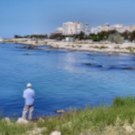Is NATO Ready for War? An In-Depth Assessment of Defense and Deterrence
-
Recently Browsing 0 members
- No registered users viewing this page.
-
Topics
-
-
Popular Contributors
-
-
Latest posts...
-
76
UK Gender Rule Showdown: Legal Clash over Schools and Prisons
This should be a non story. There are only 2 sexes, male and female, no matter what the deluded people think. A male has an XY chromosome and a Female an XX chromosome. -
92
More "Wise" Bad News For Wise Customers Residing in Thailand
I do transfer money myself, but not via Wise, thanks all the same. -
5
Israel prepares to move Palestinians to southern Gaza
Do your buddies wish they never attacked Israel on Oct 7th, 2023? -
97
Finance Thailand Tightens Mobile Banking to Curb Scams
It is a pity the banks take action when a scammer is notified to the bank. I gave all the details of a scammer to one bank and what did they do with it? Absolutely nothing. Additionally it may be a good idea to have payments by phone and the old fashioned way by using cash. Restricting a limit is not going to do anything to stop scammers. -
27
Thai - Cambodia Conflict Hun Sen Threatens Arrest of Thai Leaders Amid Border Dispute
I care, and I'm sure others are also interested. And, um, you cared enough to have your 2 bobs worth. Perhaps next time you only reply if you really have something to add. -
13
Accident Brit Now Faces 10yrs in Jail After Pattaya Crash Death
He would be long gone from Thailand.
-
-
Popular in The Pub



.thumb.jpg.3ee24d9400fb02605ea21bc13b1bf901.jpg)






.thumb.jpg.bc523c85a8d558dbc282dca7a2e602c9.jpg)

Recommended Posts
Create an account or sign in to comment
You need to be a member in order to leave a comment
Create an account
Sign up for a new account in our community. It's easy!
Register a new accountSign in
Already have an account? Sign in here.
Sign In Now